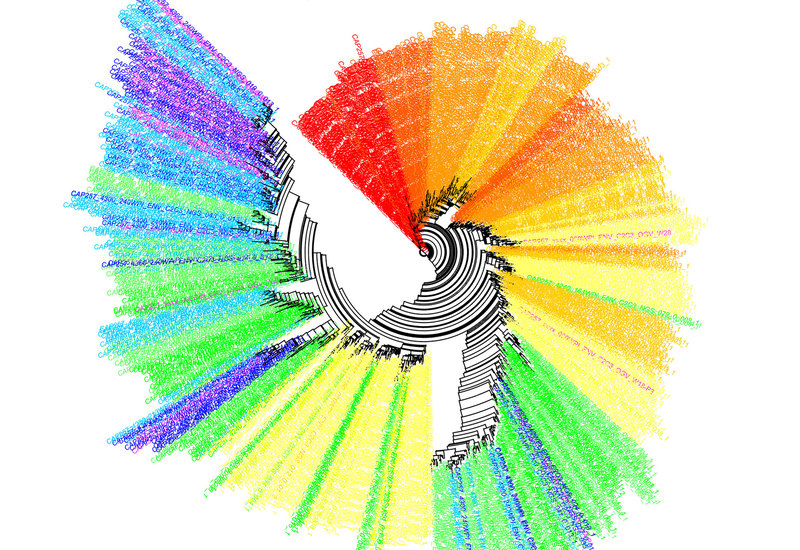Melissa-Rose Abrahams published in Science Translational Medicine
29 April 2020 | Story Melissa-Rose Abrahams. Photo Science Translational Medicine. Read time 3 min.
Melissa-Rose Abrahams was the first author on a paper published in October 2019 in the prestigious journal Science Translational Medicine. Her research throws light on one of the greatest barriers to finding a cure for HIV.
Abrahams’ article became the cover article for the journal. The research team included academics from Columbia University, Temple University and the University of North Carolina (all in the United States) and from the Centre for the AIDS Programme of Research in South Africa (CAPRISA) in Durban.
HIV infects CD4 T cells in the blood and tissue. Upon initiation of antiretroviral treatment, a number of infected cells transition to a dormant state where the virus persists but is not targeted by drugs or the immune system. If treatment is stopped, the virus will re-emerge.
The pool of dormant cells is referred to as the latent viral reservoir. The research team undertook to understand in more detail how this reservoir forms by looking at the viral strains present in the blood after many years of treatment.
Key finding
Their key finding was that most of the viral strains in the reservoir resembled those strains present in blood shortly before the initiation of antiretroviral treatment.
“Surprisingly, we found that the majority of the viruses in the reservoir of these women – about 71% – most closely resembled viruses circulating within a year of therapy starting,” said Abrahams.
This led them to the theory that treatment actually creates an environment in which many of the infected cells circulating in the body transition to a dormant state and that a window of opportunity may exist at the time of starting treatment in which these cells can be targeted before going into dormancy.
We found that the majority of the viruses in the reservoir of these women … most closely resembled viruses circulating within a year of therapy starting.”
The finding generated a lot of excitement and was reported in multiple online news articles, on eNCA (by Professor Salim Abdool Karim) and Abrahams was interviewed on SAfm, which she found very daunting.
This work is leading to multiple new studies, including a small clinical trial.
“If we can come up with a biological intervention to reduce the number of infected cells transitioning to latency at the time of initiating treatment, it’s possible we could restrict the establishment of most of this viral reservoir,” she said.
Melissa-Rose Abrahams, Sarah B Joseph, Nigel Garrett, Lynn Tyers, Matthew Moeser, Nancie Archin, Olivia D Council, David Matten, Shuntai Zhou, Deelan Doolabh, Colin Anthony, Nilu Goonetilleke, Salim Abdool Karim, David M Margolis, Sergei Kosakovsky Pond, Carolyn Williamson and Ronald Swanstrom, “The replication-competent HIV-1 latent reservoir is primarily established near the time of therapy initiation”, Science Translational Medicine, 9 Oct 2019, 11, Issue 513, DOI: 10.1126/scitranslmed.aaw5589.
 This work is licensed under a Creative Commons Attribution-NoDerivatives 4.0 International License.
This work is licensed under a Creative Commons Attribution-NoDerivatives 4.0 International License.
Please view the republishing articles page for more information.
Related










